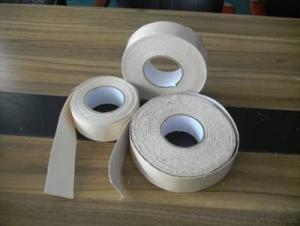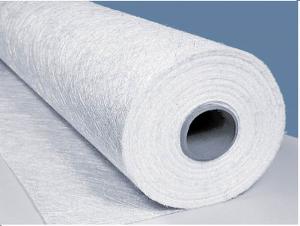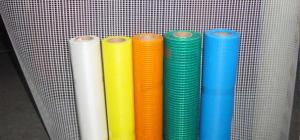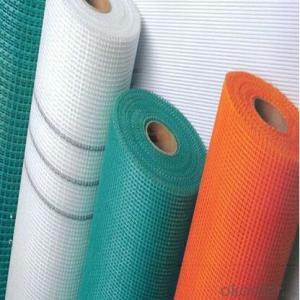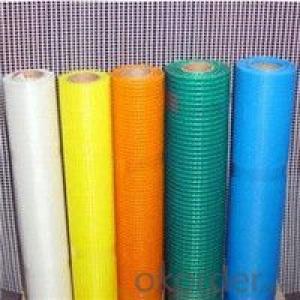Shoji Screen Fiberglass Fabric - Glass Fiber Mesh
- Loading Port:
- Qingdao
- Payment Terms:
- TT OR LC
- Min Order Qty:
- -
- Supply Capability:
- 1000000 m²/month
OKorder Service Pledge
OKorder Financial Service
You Might Also Like
Specifications
Alkali-resistant wall reinforced Fiberglass Mesh fiberglass manufacturer
Pass CE &ISO 9001
width can be 200cm
Firm mesh
The grid component
Fiberglass mesh is based on glass fiber woven fabric as substrate, the macromolecular
anti emulsion coating. It has good alkali resistance, flexibility and latitude to the high tensile
strength, with its good chemical stability, high strength, light weight, good dimensional
stability, strong impact resistance, pest control, fire protection, thermal insulation and
other features, welcomed by the user .
Use the grid cloth
Its widely used in: 1, wall reinforcing material; 2, reinforced cement products; 3, internal and
external wall insulation, 4, granite, marble, mosaic special mesh back paste network;
5, waterproof cloth, asphalt roofing; 6, reinforcing materials of plastics, rubber products;
7, fire board; 8, the grinding wheel base; 9, highway pavement with geogrid; 10, building
sealing tape etc.
- Q: What are the different fiberglass fabric weaves for high strength applications?
- There are multiple fiberglass fabric weaves commonly utilized for high strength applications, including plain weave, twill weave, satin weave, and leno weave. 1. Plain weave: This weave pattern is the most fundamental and widely used. It involves an over-under pattern, with each warp yarn passing over and under each weft yarn. Plain weave fabrics offer exceptional strength and dimensional stability, making them appropriate for a wide range of high strength applications. 2. Twill weave: Twill weave is characterized by a diagonal pattern formed by the interlacing of warp and weft yarns. This weave is renowned for its strength and durability. Twill weave fabrics possess good drapability, making them ideal for applications requiring flexibility and resistance to wrinkling. 3. Satin weave: Satin weave is identified by long floats, where the warp or weft yarns skip over multiple yarns in the opposite direction. This creates a smooth and glossy surface. Satin weave fabrics boast excellent strength and are commonly used in applications desiring a high-quality finish, such as aerospace components and luxury goods. 4. Leno weave: Leno weave is a distinctive pattern that involves twisting adjacent warp yarns around each weft yarn. This creates a stable and open structure with good strength and stability. Leno weave fabrics find common use in high strength applications where breathability and lightness are crucial, such as filtration systems and composites. These various fiberglass fabric weaves offer different levels of strength, flexibility, and durability, enabling manufacturers to select the most suitable weave for their specific high strength applications.
- Q: Can fiberglass fabric be used in marine applications?
- Fiberglass fabric has a wide range of uses in the marine industry. Its strength, durability, and resistance to water and corrosion make it a versatile material for boat building and repair. The fabric can be employed to reinforce the hull, decks, and other structural components of a boat, providing added stability and strength. Moreover, it is commonly utilized in the construction of boat interiors, like cabinetry and seating, as it can be easily molded and shaped to meet specific design requirements. Additionally, fiberglass fabric is frequently employed in boat maintenance and repair to patch and reinforce damaged areas. Overall, fiberglass fabric is highly favored in marine applications due to its exceptional performance in the marine environment.
- Q: How do fiberglass fabrics perform in terms of thermal conductivity?
- Fiberglass fabrics have low thermal conductivity, meaning they are poor conductors of heat. This property allows them to insulate and retain heat effectively, making them suitable for applications where thermal insulation is required.
- Q: What are the typical applications of fiberglass fabrics?
- Fiberglass fabrics have a wide range of applications due to their unique properties and versatility. Some of the typical applications of fiberglass fabrics include: 1. Construction: Fiberglass fabrics are widely used in the construction industry for reinforcing concrete structures. They are used as a substitute for steel reinforcement in applications such as walls, beams, and columns. Fiberglass fabrics provide high strength, corrosion resistance, and durability, making them suitable for various construction projects. 2. Automotive industry: Fiberglass fabrics find application in the automotive industry for manufacturing lightweight and high-performance parts. They are used to reinforce body panels, interior components, and structural parts. Fiberglass fabrics offer excellent strength-to-weight ratio and impact resistance, making them ideal for improving fuel efficiency and reducing vehicle weight. 3. Aerospace and aviation: Fiberglass fabrics are used in the aerospace and aviation industry for manufacturing aircraft components. They are used in the construction of aircraft wings, fuselage panels, interior structures, and fairings. Fiberglass fabrics provide high strength, stiffness, and resistance to extreme temperatures, making them suitable for demanding aerospace applications. 4. Marine industry: Fiberglass fabrics are extensively used in the marine industry for boat and yacht construction. They are used to build hulls, decks, bulkheads, and other structural components. Fiberglass fabrics offer excellent resistance to water, chemicals, and UV radiation, making them ideal for marine applications. 5. Sports and recreation: Fiberglass fabrics are commonly used in the sports and recreation industry for manufacturing various equipment and products. They are used to create sporting goods like golf clubs, fishing rods, archery bows, and surfboards. Fiberglass fabrics provide high strength, flexibility, and impact resistance, making them suitable for demanding sports applications. 6. Electrical insulation: Fiberglass fabrics find application in electrical insulation due to their non-conductive properties. They are used as insulating materials in electrical components like circuit boards, transformers, and electrical motors. Fiberglass fabrics offer excellent thermal stability, electrical insulation, and flame retardancy, making them ideal for electrical applications. Overall, fiberglass fabrics are widely used in various industries due to their exceptional properties such as high strength, durability, corrosion resistance, lightweight, and flexibility. These fabrics provide excellent solutions for diverse applications ranging from construction and automotive to aerospace and sports.
- Q: How is fiberglass fabric used in the production of sports helmets?
- Fiberglass fabric is commonly used in the production of sports helmets due to its unique properties that make it an ideal material for this purpose. Firstly, fiberglass fabric is known for its strength and durability. It provides excellent impact resistance, which is crucial for protecting the head during sports activities where collisions and falls are common. The production process involves several steps. The fiberglass fabric is first layered and molded into the desired helmet shape using a combination of heat and pressure. This allows the fabric to conform to the specific contours and curves required for a comfortable and secure fit. Furthermore, fiberglass fabric is lightweight, making it an excellent choice for sports helmets. It does not add unnecessary weight to the user's head, ensuring comfort and reducing fatigue during prolonged use. Additionally, the lightweight nature of fiberglass fabric allows for greater maneuverability and agility, which is especially important in fast-paced sports. Another significant advantage of using fiberglass fabric in sports helmets is its resistance to water and moisture. This property ensures that the helmet remains intact and functional even in wet conditions, such as during water sports or heavy sweating. Moreover, fiberglass fabric is resistant to UV radiation, preventing degradation and maintaining the helmet's structural integrity over time. Lastly, fiberglass fabric offers opportunities for customization and design flexibility. It can be easily combined with other materials or coatings to enhance specific features of the helmet, such as adding an extra layer of protection or improving its aerodynamics. In summary, fiberglass fabric is an essential component in the production of sports helmets due to its strength, durability, lightweight nature, resistance to water and UV radiation, and design flexibility. It plays a crucial role in ensuring the safety and comfort of athletes participating in various sports activities.
- Q: Is fiberglass fabric resistant to chemicals in automotive fluids?
- Yes, fiberglass fabric is generally resistant to chemicals found in automotive fluids. Fiberglass itself is a highly durable and versatile material that is known for its resistance to a wide range of chemicals, including those typically found in automotive fluids such as gasoline, diesel, oil, and antifreeze. It is commonly used in automotive applications where resistance to chemicals is required, such as in the production of gaskets, seals, and insulation materials. However, it is important to note that the specific chemical resistance of fiberglass fabric can vary depending on the type of resin used in its production and the specific composition of the automotive fluid. Therefore, it is always recommended to consult the manufacturer's specifications or conduct compatibility tests to ensure the optimal performance of fiberglass fabric in contact with automotive fluids.
- Q: How does fiberglass fabric handle repeated flexing and stretching?
- Fiberglass fabric is known for its exceptional durability and ability to withstand repeated flexing and stretching. Due to its inherent flexibility and high tensile strength, fiberglass fabric can handle these mechanical stresses without significant damage or loss of performance. The interwoven fiberglass strands provide the fabric with excellent resistance to compression, bending, and stretching, making it highly suitable for applications that require repetitive motion or dynamic loads. Additionally, the unique properties of fiberglass, such as its low coefficient of thermal expansion and high resistance to chemicals and moisture, further contribute to its ability to handle repeated flexing and stretching. Overall, fiberglass fabric is a reliable and robust material that can withstand the demands of various industries and applications.
- Q: How does fiberglass fabric handle moisture absorption?
- Fiberglass fabric has a low moisture absorption rate, making it resistant to absorbing water.
- Q: How is fiberglass fabric used in the production of insulation sheets?
- Due to its superior thermal insulation properties, fiberglass fabric is commonly utilized in the manufacturing of insulation sheets. This fabric is created by intricately weaving fine strands of fiberglass together, resulting in a robust and enduring material. In the production process of insulation sheets, fiberglass fabric is typically employed as a reinforcement layer. Initially, a layer of fiberglass fabric is placed atop the insulation material, which is typically composed of foam or mineral wool. This fabric serves to bolster the strength of the insulation sheet and prevent any tearing or damage during installation or usage. Moreover, fiberglass fabric functions as a barrier, preventing the insulation material from shifting or settling over time. This ensures the insulation remains intact, without any gaps or voids, thereby preserving its efficacy and efficiency. Furthermore, fiberglass fabric imparts additional fire resistance to the insulation sheets. It possesses inherent fire-resistant properties, which effectively curtail the propagation of flames and diminishes the risk of fire hazards. This is particularly crucial in scenarios where insulation sheets are employed in buildings or structures where fire safety is a paramount concern. Additionally, fiberglass fabric boasts excellent moisture resistance. It creates a formidable barrier against water or moisture infiltration, safeguarding the insulation material. This is of paramount importance in upholding the thermal performance of the insulation, as moisture can significantly undermine its effectiveness. In summary, fiberglass fabric plays a pivotal role in the production of insulation sheets by enhancing strength, providing fire resistance, improving moisture resistance, and ensuring long-lasting thermal insulation. Its versatility renders it a dependable and extensively utilized material within the insulation industry.
- Q: How does fiberglass fabric handle oil and chemical spills?
- Fiberglass fabric is known for its exceptional resistance to oil and chemical spills. Its non-absorbent nature makes it highly effective in handling these spills. When oil or chemicals come into contact with fiberglass fabric, they do not penetrate or seep through the material. Instead, they remain on the surface, allowing for easy clean-up and preventing any potential contamination or damage to the underlying surface. Due to its inert and non-reactive properties, fiberglass fabric does not chemically react with most oils or chemicals, ensuring that it remains sturdy and durable even when exposed to harsh substances. This makes it an ideal choice for applications where oil and chemical spills are a common occurrence, such as in industrial plants, laboratories, or oil refineries. Additionally, fiberglass fabric is resistant to corrosion, which means it can withstand prolonged exposure to various chemicals without deteriorating or losing its structural integrity. This resistance to corrosion further enhances its suitability for handling oil and chemical spills. Furthermore, fiberglass fabric is often coated with a special finish or treated with a chemical-resistant coating to enhance its resistance to oil and chemical spills. These coatings provide an additional layer of protection, preventing any potential damage or degradation of the fabric when in contact with oils or chemicals. In summary, fiberglass fabric's non-absorbent nature, chemical inertness, corrosion resistance, and optional chemical-resistant coatings make it highly effective in handling oil and chemical spills. Its ability to contain and repel these substances makes it a reliable choice for industries and settings where such spills are a concern.
Send your message to us
Shoji Screen Fiberglass Fabric - Glass Fiber Mesh
- Loading Port:
- Qingdao
- Payment Terms:
- TT OR LC
- Min Order Qty:
- -
- Supply Capability:
- 1000000 m²/month
OKorder Service Pledge
OKorder Financial Service
Similar products
Hot products
Hot Searches
Related keywords






